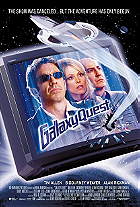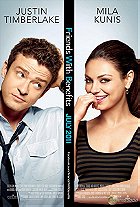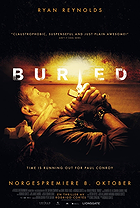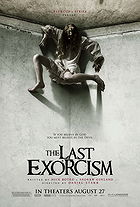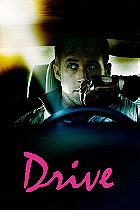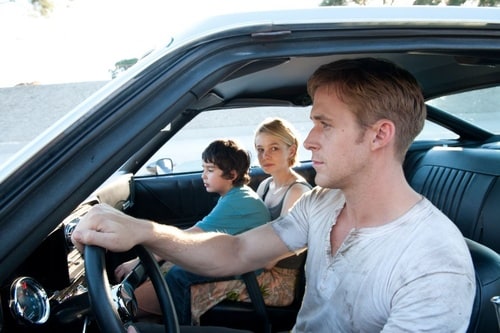The Change-Up is an apparent attempt on the part of screenwriters Jon Lucas and Scott Moore to reinvent body-switching movies for today's audiences. While 2009's 17 Again used a similar type of concept to make a generic contemporary family flick, The Change-Up was crafted with R-rated sensibilities in mind, meaning profanity, un-PC humour and gross-out gags. In other words, The Change-Up is geared towards the Hangover crowd, which is hardly surprising since writers Lucas and Moore were also responsible for writing 2009's The Hangover. It's a shame, though, that the writers didn't shake up the formula while they were at it, as the film adheres to the same old tired template we've seen hundreds of times before. But credit where credit is due - The Change-Up is pretty damn funny if crass humour is your thing.
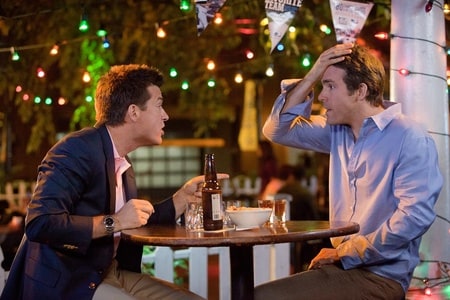
Married, career-minded lawyer Dave Lockwood (Bateman) is on the brink of making partner at the firm where he works. But Dave's family life is less promising, with a new set of twins driving him positively insane. To let off some steam, Dave agrees to a drunk night out with his stoner pal Mitch (Reynolds), a struggling actor who's out of work more often than not. While taking a piss in a mysterious park fountain together, Dave and Mitch simultaneously verbalise that they wish they had each other's life. Waking up the following morning, the men find that their wish has been granted: they've switched bodies. This compels the boys to search for a fast solution, but, unfortunately, the fountain is out of commission because the city plans to relocate it. Consequently, Dave and Mitch have no choice but to pose as each other until they find out the fountain's new location.
Summer 2011 also saw the release of such R-rated comedies as Bridesmaids and Horrible Bosses, the former of which benefitted from immense emotional maturity while the latter was surprisingly original. The Change-Up, on the other hand, is a different specimen (though it shares Horrible Bosses cast member Jason Bateman). The premise, as previously stated, is incredibly hackneyed, while the attempts at maturity and all of the blatant character revelations seem eye-rollingly forced and perfunctory, not to mention obvious. (Gee, do you think Dave will learn the value of marriage and realise he should be happy with what he has? And that Mitch will realise the futility of his immoral womanising lifestyle?) One imagines that a darker treatment of the same premise could have gone further and been more satisfying. After all, it is R-rated and moderately low budget, so would some boldness be too much to ask for? Additionally, in a baffling creative decision, The Change-Up's nudity is computer-generated. Indeed, you don't see the breasts of either Leslie Mann or (the scorching hot) Olivia Wilde - you just see digitally-created boobs on each actress. Now smutty comedies are denying us the authentic nudity that we crave? I miss the '80s...

While its plotting is stiff, the first half of The Change-Up is beset with hilarity - character hijinks are often uproarious, and hilarious dialogue abounds. The humour is not of the smart or witty variety, but there's a good chance you'll get at least a few satisfying belly-laughs out of the movie if you're a fan of comedies of this ilk. Director David Dobkin (Wedding Crashers) appears to have a good sense of comedic timing, resulting in a handful of perfectly-executed humorous sequences that had this reviewer in fits of laughter. Unfortunately, however, the film does slow down in its second half, and the final act is interminably long as every aspect of Mitch and Dave's epiphanies is pointlessly underlined. The Change-Up clocks in at a bewildering two hours, but comedies of this nature should be shorter and brisker.
Jason Bateman has never been looser than he is in this film. While the role of Dave is just a simple variation of Bateman's habitual screen persona, his overzealous antics and constant swearing are side-splitting when he becomes Mitch. It's also a testament to Bateman's skill as a performer that he manages to keep both roles likeable no matter what he does. Ryan Reynolds, meanwhile, is similarly terrific, showing that his dismal work in Green Lantern was just a one-off tragedy. The greatest measure of the success of stars in a body-swap comedy is how believably each actor embodies the persona of the other. Bateman and Reynolds are not perfect in this respect, but their work is nevertheless strong. Meanwhile, the remainder of the cast is pretty standard stuff; easily passable for this sort of comedy, but nothing to write home about.

The Change-Up's script leaves a bit to be desired since it unnecessarily drags out the thin premise and contains too much filler, though it's laudable that writers Jon Lucas and Scott Moore at least tried to imbue the characters with some depth. But analysis like this is probably superfluous for what's just a lightweight mainstream comedy for the masses. The fact remains that if you like R-rated romps (like The Hangover), you will probably have a good time with this movie.
6.0/10
 Login
Login
 Home
Home 183 Lists
183 Lists 1669 Reviews
1669 Reviews Collections
Collections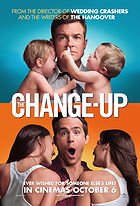
 0 comments,
0 comments, 









